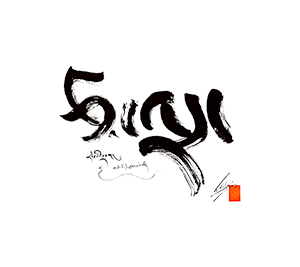Bde gshegs snying po'i stong thun chen mo seng+ge'i nga ro
Mipam lays out his view of buddha-nature in a short text called Lion's Roar: Exposition of Buddha-Nature, which draws on another of the five treatises of Maitreya, the Sublime Continuum. Here he presents three main arguments showing why all beings have buddha-nature. He also distinguishes his view of buddha-nature, which he portrays as the unconditioned unity of emptiness and appearance, from other traditions' views. Namely, he contrasts his view with traditions that maintain buddhanature as truly real and not empty (Jonang), traditions that hold buddhanature to be simply the mind's absence of true existence (Geluk), and traditions that maintain that the cognitive quality of buddha-nature—the element that is in unity with emptiness—is impermanent (a Sakya view).
(Source: Duckworth, Douglas. Jamgön Mipham: His Life and Teachings. Boston: Shambhala Publications, 2011: p 58.)Relevance to Buddha-nature
According to the colophon this work was written to fulfill a request for explanation of verse I.28 in the Uttaratantra.
| Other Titles | ~ bde gshegs snying po'i stong thun chen mo seng ge'i nga ro |
|---|---|
| Text exists in | ~ Tibetan |
| Commentaries on this text |
Bod sprul mdo sngags bstan pa'i nyi ma. Stong thun gnad kyi zin thun. In Gsung 'bum mdo sngags bstan pa'i nyi ma, Vol. 1: 261-274. Khreng tu'u: si khron mi rigs dpe skrun khang, 2004. |
This Text on Adarsha - If it doesn't load here, refresh your browser.



